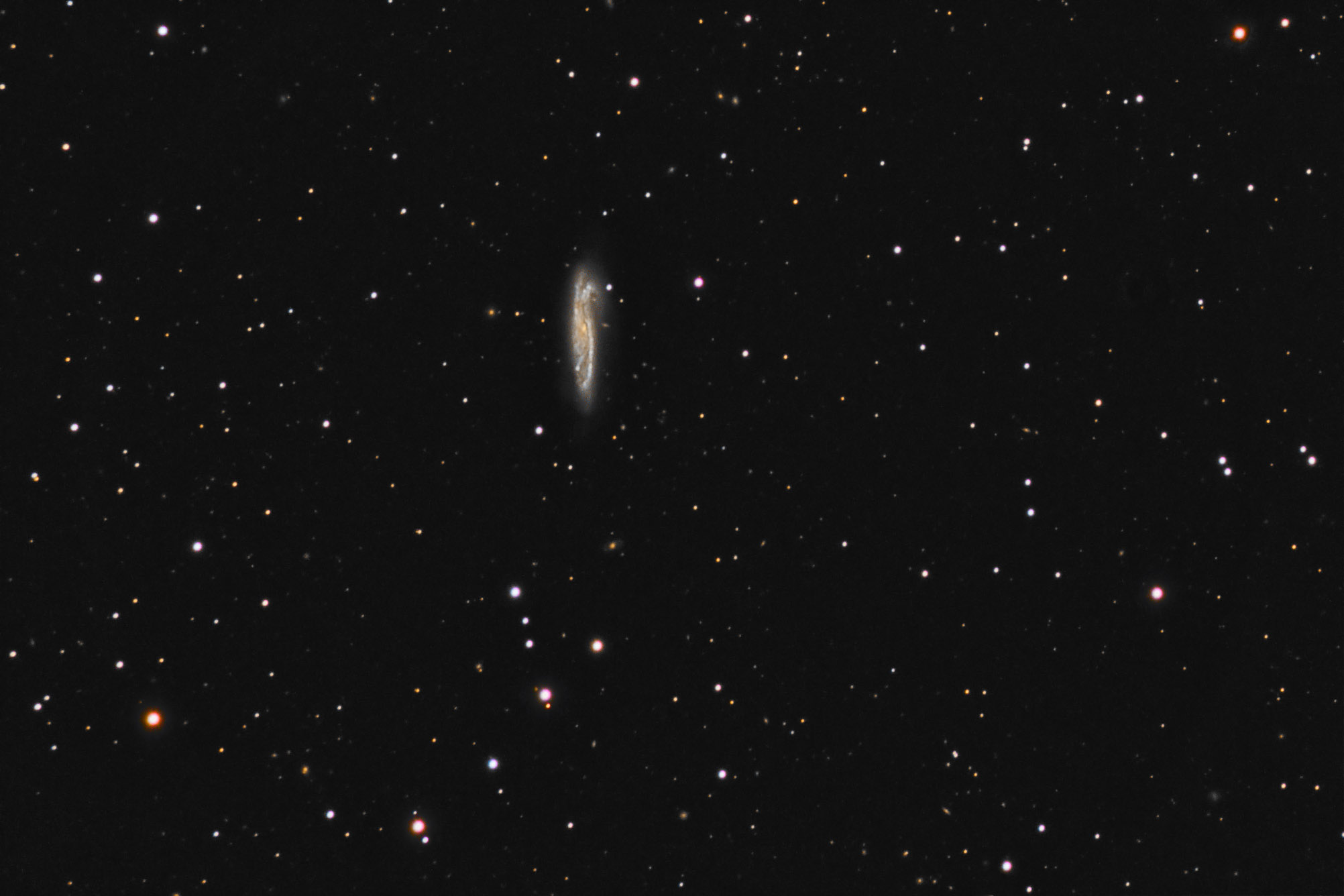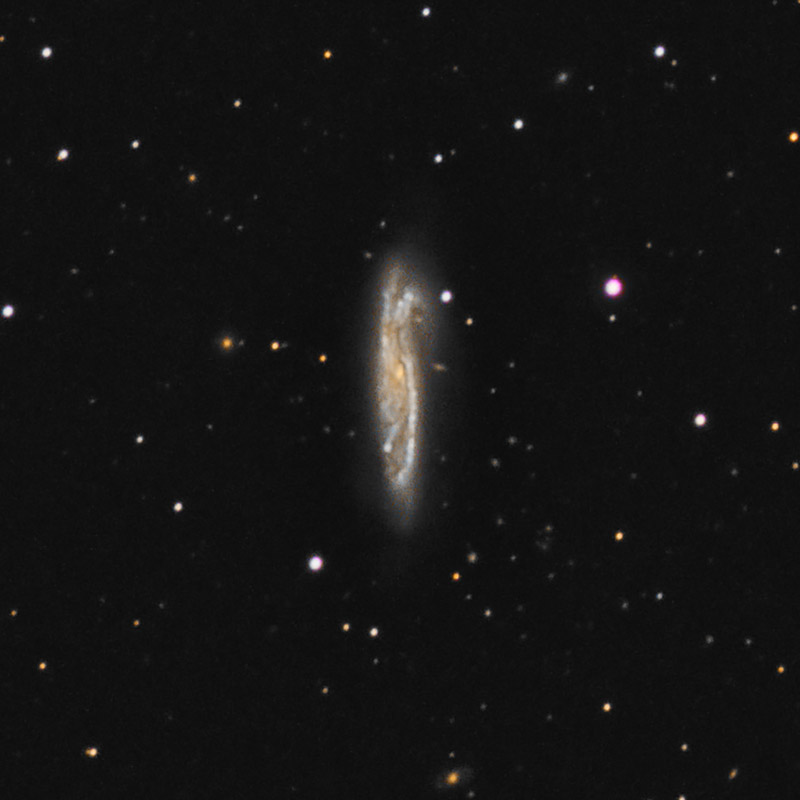| Description | Images |
Object name: NGC1421Designation(s): NGC1421, NGC 1421 is a strange near edge on galaxy in northern Eridanus about 90 million light-years distant by redshift and 83 by Tully-Fisher measurement. It has high surface brightness distorted arms in an otherwise low surface brightness disk. It's been on my to-do list for years but being so far south (-13.5 degrees) seeing never was up to the task until this October night. NED classifies it as SAB(rs)bc: with HII. Its redshift moves the H alpha emission well out of my passband and I was unable to pick it up this low with RGB filters. The NGC Project classifies it as Sb+ I: while Seligman agrees with NED. But he mentions that de Vaucouleurs uses it as an example of an SB(s)c galaxy. No two papers I looked at seemed to agree on its classification. One admitted, "Classification is difficult." Yet another said it was simply Sc (no bar). Related Designation(s):2MASS J03422927-1329167, 2MASX J03422928-1329168, 2MFGC 03076, 6dF J0342292-132917, 6dF J0342293-132917, AGC 430433, AKARI J0342298-132922, CGS 214, HIPASS J0342-13, HIPASS J0342-13:[MHF2006] S1 , IRAS 03401-1338, IRAS F03401-1338, LDCE 0251 NED044, MCG -02-10-008, NGC 1421, NGC1421, NVSS J034229-132918, PGC 013620, SSTSL2 J034229.27-132917.3, [RHM2006] SFGs 086, |

